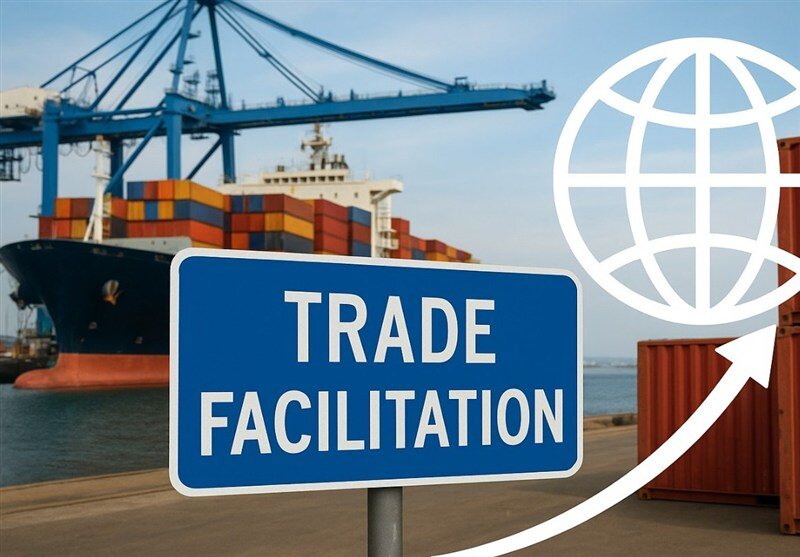Economy Ministry pushes bold customs overhaul to speed up trade flow

TEHRAN – In response to the country’s evolving economic conditions, Iran’s Ministry of Economic Affairs and Finance has launched a comprehensive initiative to streamline customs procedures and deliver on its pledge to reduce cargo clearance time to three days. The plan includes both regulatory revisions and a new legislative proposal soon to be submitted to Parliament.
The initiative comes as part of the government’s wider strategy to mitigate the impact of renewed foreign restrictions following the activation of the “snapback” mechanism. Officials say the new customs reforms aim to ensure the steady flow of essential goods, production inputs, and industrial materials, while preventing disruptions in supply chains.
The Ministry has established a special committee chaired by Economy Minister Ali Madanizadeh, bringing together representatives from the Customs Administration, the Organization for Investment and Economic Assistance, and other key economic bodies. The committee’s main focus is on facilitating imports of essential goods, removing customs barriers, and improving the investment climate.
Targeting a chronic issue: cargo congestion at ports and customs houses
One of the core issues under review is the persistent backlog of goods in Iran’s ports and customs facilities — a structural problem that has slowed trade and increased costs for businesses. Research conducted jointly by the Ministry, ICCIMA, and the Parliamentary Research Center shows that the main cause of delays lies not in foreign exchange shortages but in overlapping permits, bureaucratic duplication, and the lack of a unified digital platform among agencies.
To address this, the Ministry is implementing short-, medium-, and long-term reforms designed to cut red tape and increase transparency. Among the priorities is the establishment of a “single trade window” that will allow importers to complete all clearance procedures through an integrated digital system.
Three-day clearance goal and digital transformation
The centerpiece of the reform package is the Ministry’s promise to achieve “three-day clearance” for goods. To reach this target, new regulations are being introduced to reduce the average clearance time from around 12 days to just three. The Ministry is also developing a real-time tracking system that will monitor shipments from the moment of order registration to their release from customs.
This integrated platform — jointly designed by the Ministry of Economy, the Central Bank, and the Ministry of Industry, Mine and Trade — is scheduled to become fully operational by the end of the Iranian year 1404 (March 2026).
From legislation to execution: modernizing the customs system
Many of the bottlenecks stem from outdated laws misaligned with modern trade realities. The Ministry plans to submit a new bill to Parliament addressing these gaps. The preliminary framework includes eliminating redundant permits, delegating parts of customs operations to the private sector, and simplifying foreign exchange verification.
If passed, the reform could significantly reduce administrative visits, enhance transparency, and boost the ease of doing business in Iran’s trade environment.
Smart customs and private-sector participation
Digitalization is central to the reform agenda. The Ministry is promoting “smart customs” through automation and the use of artificial intelligence for risk assessment and cargo classification. In parallel, it seeks to empower the private sector to participate in warehouse management, expedited clearance services, and even cargo evaluation.
Officials also stress the importance of aligning foreign exchange and customs policies to remove procedural overlaps between the Central Bank and customs offices. This alignment is expected to shorten currency verification times and facilitate faster imports.
A coordinated economic response to external pressures
The reform drive forms part of a broader government response to the snapback mechanism. The Central Bank has been tasked with maintaining monetary stability, the Planning and Budget Organization with fiscal discipline, and the Ministry of Economy with implementing customs, taxation, and business financing measures.
The Ministry’s approach embodies the principle of “antifragility” — strengthening the economy not just to withstand shocks but to evolve and become more efficient under pressure. Through regulatory reform, digitalization, and inter-agency coordination, the Ministry aims to transform customs from a traditional bottleneck into a driver of resilience and competitiveness.
If fully executed, the “three-day clearance” plan could mark one of the most significant achievements in Iran’s trade modernization — turning customs into a symbol of agility and efficiency rather than bureaucracy.
EF/MA
